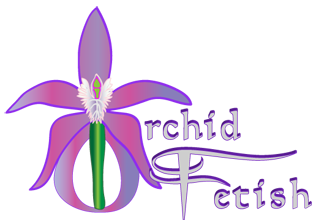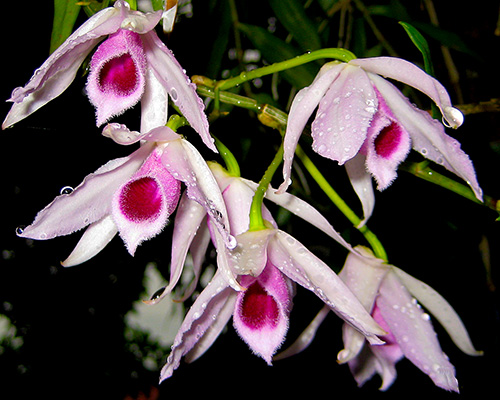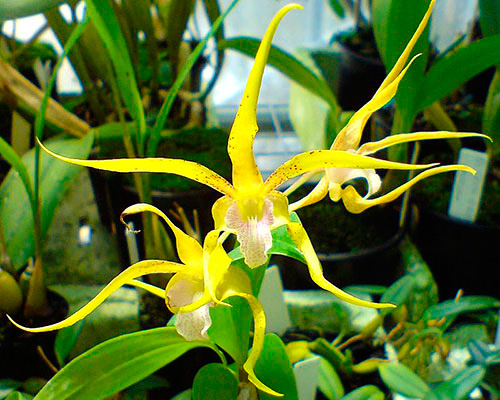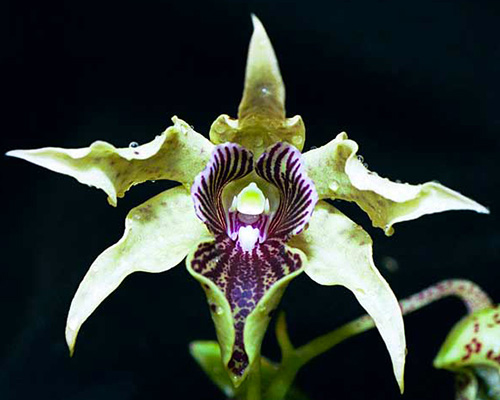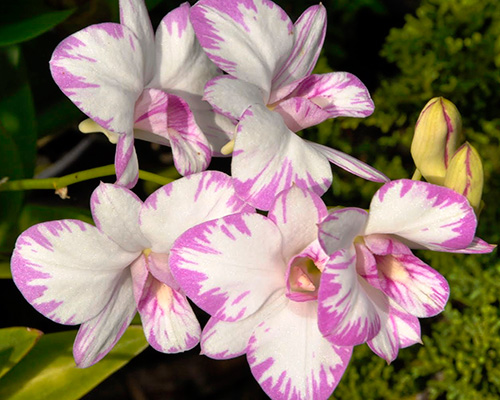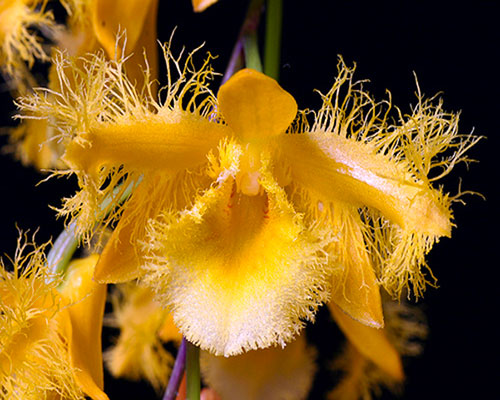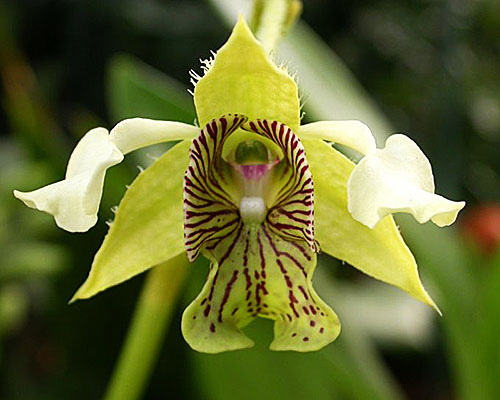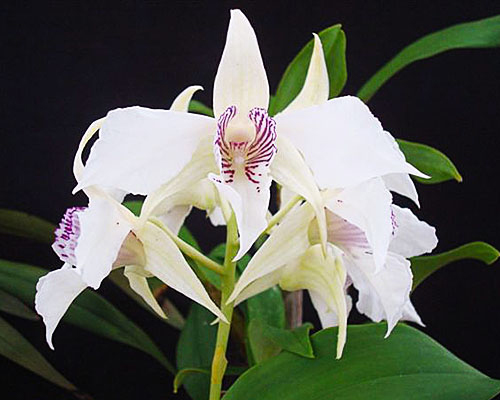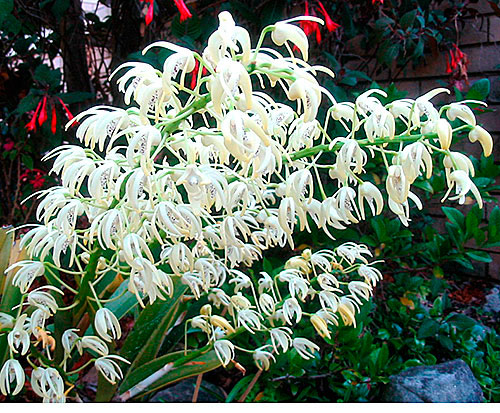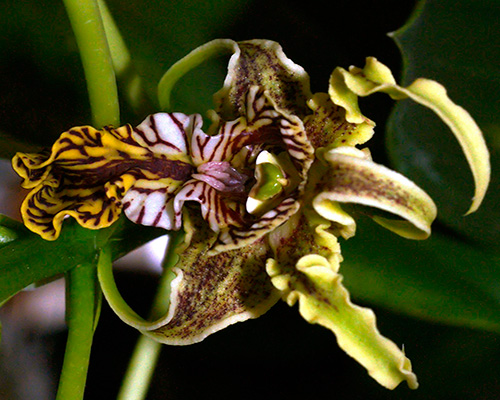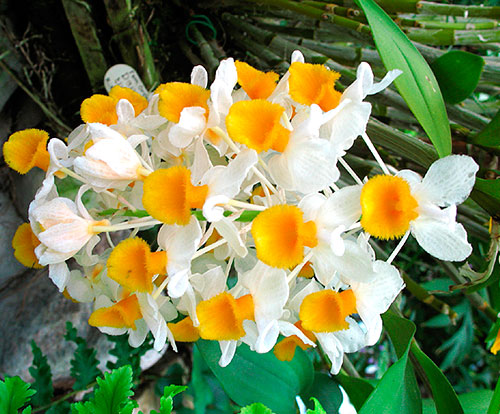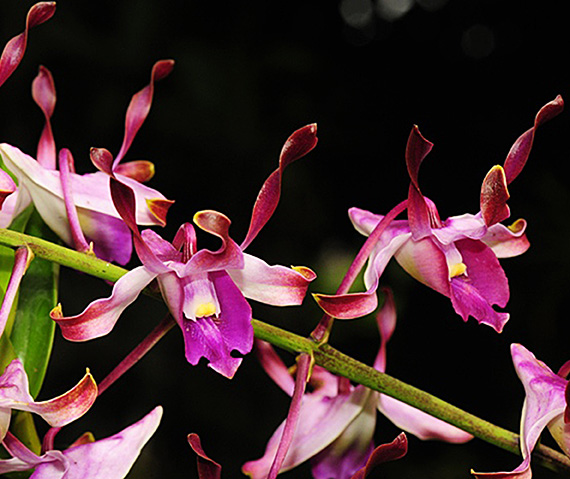Dendrobium Orchid Species
Floral Designer's Favorite
Dendrobiums are among the most commonly encountered orchids in the retail trade. Dendrobiums are also commonly used as cut flowers because of their sturdy stems and distinctive coloring .Like most other cultivated orchids, dendrobiums are air plants, or epiphytes. They have well-developed water storage organs (pseudobulbs), which are often called "canes" for their leafy upright look.
Light
A sufficient amount of light is important for healthy growth and flower production. Provide: Bright light, up to 50% sun. In the home, an east, west, or lightly shaded south window. In a greenhouse, about 30 to 50 percent of full sun. Under lights, four 40 watt flourescent bulbs directly over plants. Plants should be naturally erect, without need of much staking, and of a medium olive-green color.
Temperature
Mature plants need a 15 to 20 F difference between day and night. Provide: Nights of 60-65 F; days of 80-90 F. Temperatures up to 95-100 F are beneficial if humidity and air circulation are increased. Low temperatures (below 50 F) may cause leaf drop.
Humidity & Water
Dendrobiums need 50 to 60 percent humidity. In the home, place on trays over moistened pebbles. In a greenhouse, use a humidifier if conditiond are too dry.Keep evenly moist while in active growth. Allow to dry between waterings after growth is mature, indicated by terminal leaf.
Fertilizer & Repotting
Fertilization should be provided on a regular basis during the active growing period. Provide: The exact fertilizer you use will depend on the mix on which your plant is growing. A good general rule is to apply a balanced (10-10-10,12-12-12, or similar ratio) fertilizer "weakly, weekly" during the period of active growth. Meaning fertilize every week at one quarter to one half of the recomended dilution. Potting should be done every two to three years before mix looses consistency (break down). Pot firmly in medium, giving aeration and ample drainage, allowing enough room for two years' growth. Dendrobiums grow best in pots, considerably small for the size of the plant.
